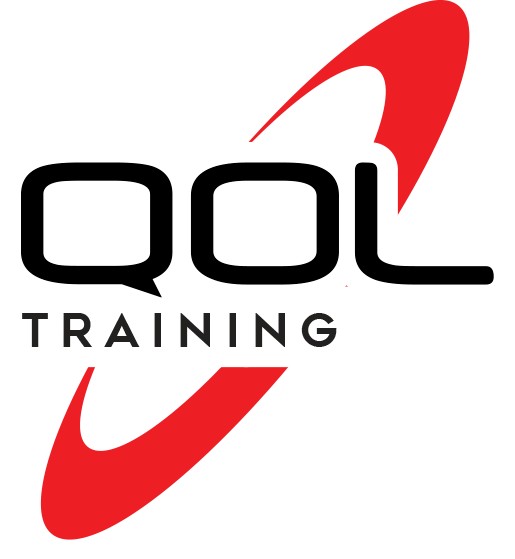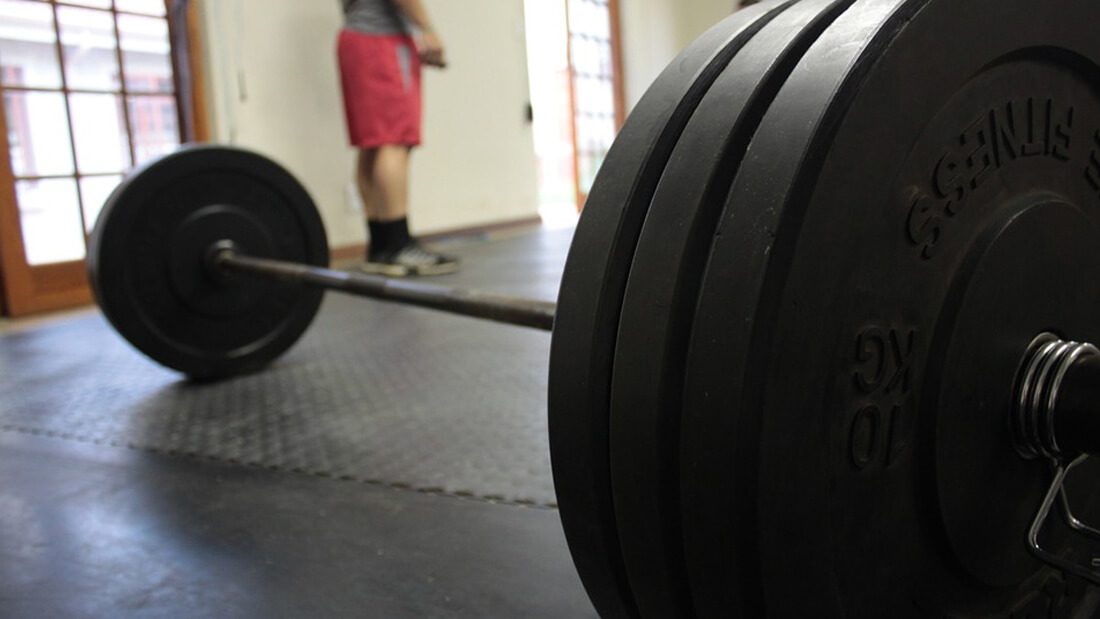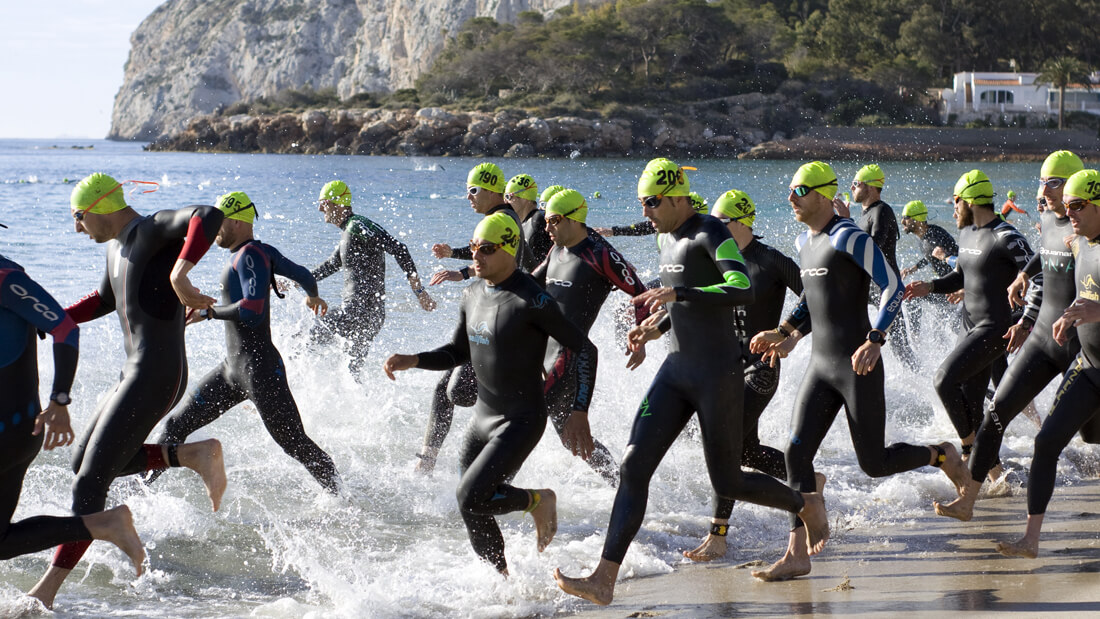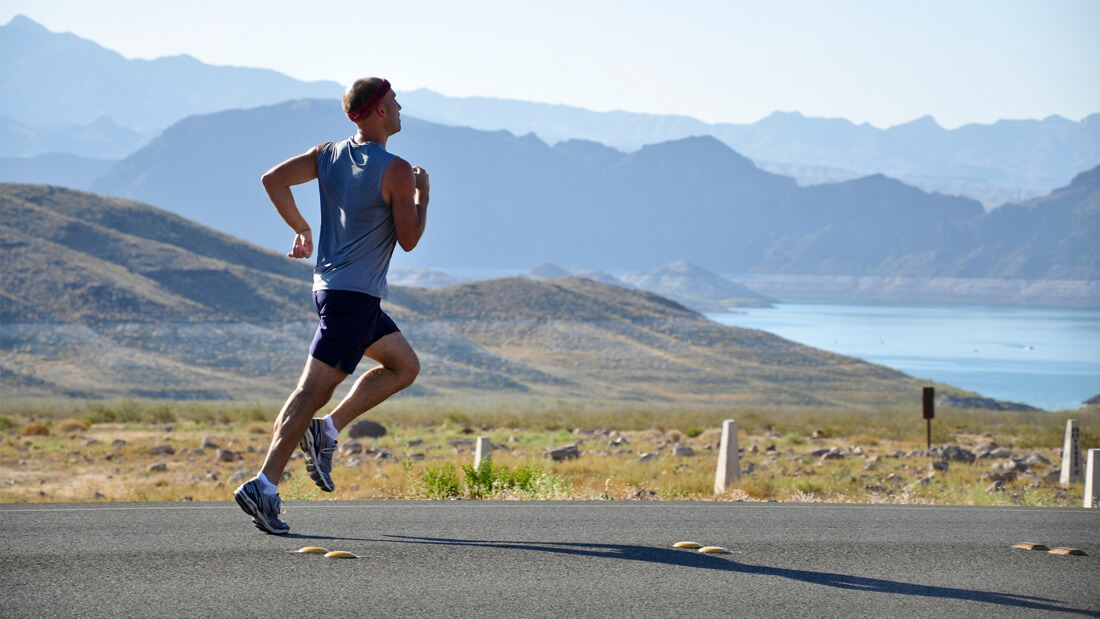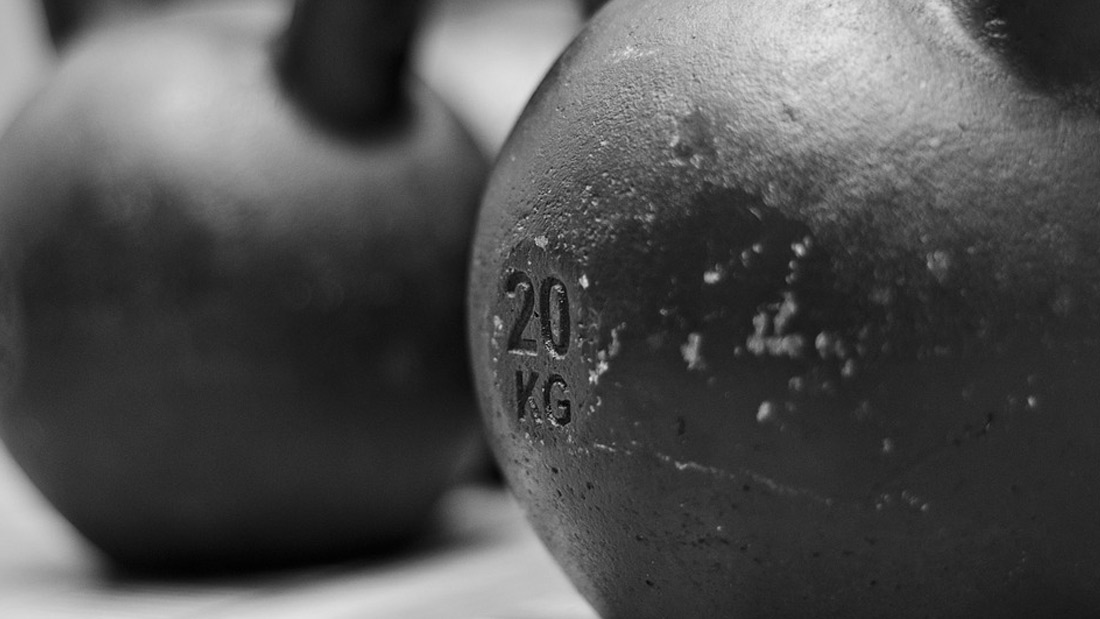The Romanian Deadlift
The Romanian Deadlift is one of my favourite exercises. It effectively targets the hamstring and glutes while demanding core stabilisation and control of movement. It is a great starting point for transitions to heavier, more complex lifts like the clean and is good preparation for safe kettlebell work.
The Romanian Deadlift originated as an assistance exercise in developing strength for Olympic Weightlifting and owes its name to Olympic champion Nicu Vlad of Romania who first demonstrated the exercise in the USA. It can be described as a combination of a stiff-leg deadlift and a normal deadlift, but it is in fact neither.
Essentially it is what we would call a hip hinge pattern which requires effective control of spinal alignment and stabilisation of lumbar spine and pelvis. Developing a strong, well-controlled hip hinge pattern is essential for progress to heavier lifting and for protecting the back in everyday lifting activities. Failure to execute a successful hip hinge strategy during lifting or movements that load the spine can be a key contributing factor in developing lower back pain.
Perhaps most important about the movement is that it emphasises eccentric control of the movement by the hamstrings and glutes. The weight is lowered slowly from the standing position as the hips fold and the back remains aligned in a natural curve (neutral alignment).
An eccentric muscle contraction is one which decelerates movement due to the force of gravity. What we tend to think about when considering a muscle contraction is a concentric contraction where muscle fibres shorten in length as we lift a weight up against gravity. In an eccentric contraction, however, we move in the direction of gravity lowering the weight slowly resisting the pull of gravity as the muscle fibres lengthen under loading.
This eccentric strength is extremely important for function and performance as normal human movement is a combination of concentric, eccentric and isometric (muscle fibres remain at same length) contractions. Our hamstrings need to demonstrate strength in each contraction type for walking and running and the relative importance of each is the subject of much current research.
The Romanian Deadlift is one of my favourite exercises. It effectively targets the hamstring and glutes while demanding core stabilisation and control of movement. It is a great starting point for transitions to heavier, more complex lifts like the clean and is good preparation for safe kettlebell work.
The concentric or lifting phase of the Romanian Deadlift (or RDL for short) remains important for developing strength and power in glutes and hamstrings as well as the in the lower back because of the emphasis placed on these muscles in lifting as opposed to the quadriceps muscles at the front of the thigh.
Collectively the calves, hamstrings, glutes and back muscles (erector spinae) form the posterior chain as they are joined via connective tissue known as fascia that envelops and unites these muscles. This posterior chain provides a powerful line of pull through the entirety of the back of the body.
A strong well- functioning posterior chain is essential for many sports and is desirable for efficient functional activities like walking, jumping and running. Modern living and deskbound working patterns tend to lead to weakness and inefficiency of the posterior chain. The Romanian Deadlift therefore represents an excellent choice to restore balance and increase function and performance.
Practice the exercise carefully with light weights and excellent form before progressing to heavier lifting. Take the time to master the basic hip hinge pattern even if you are using no weight at all. Failure to do so can result in significant injury to the lower back. Once you have developed a well- controlled hip hinge you can begin to incorporate the complete Romanian Deadlift into your workouts.
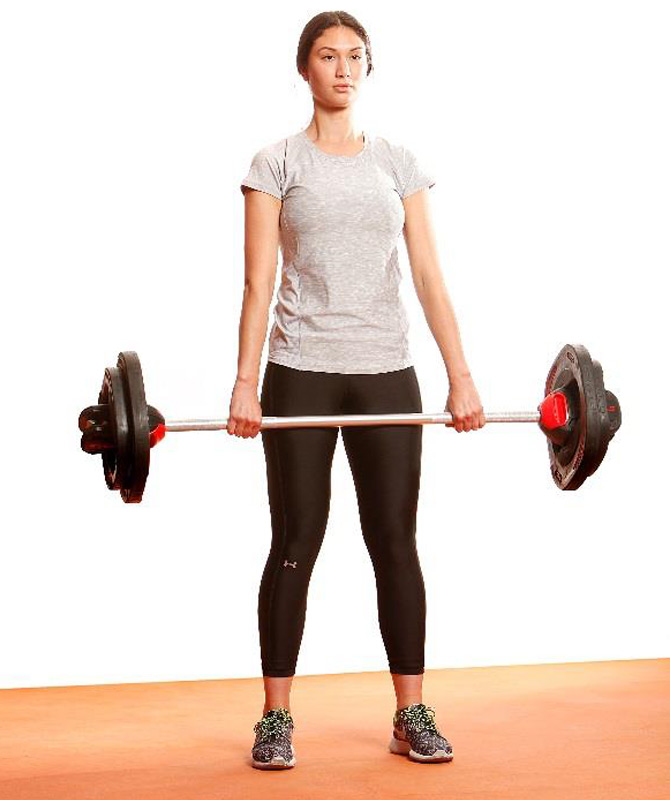
Start Position
Stand upright with an overhand grip of the bar. Arms are straight. Feet should be a narrow shoulder width (arm-pit width) apart. Weight should be evenly distributed through the feet with toes spread wide.
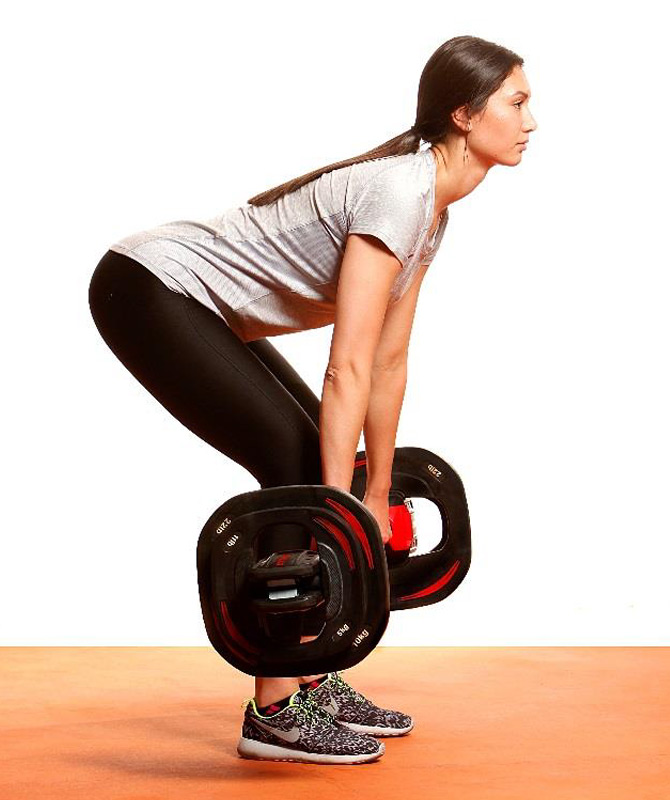
Hip Hinge Position
Abdominal muscles should be lightly braced with shoulder blades retracted and your latissimus muscles (lats) engaged (this helps the upper body resist the weight as you hinge forward). Breathe in as you prepare to lift, maintaining the abdominal brace. Your knees should be slightly bent (around 20ᵒ).
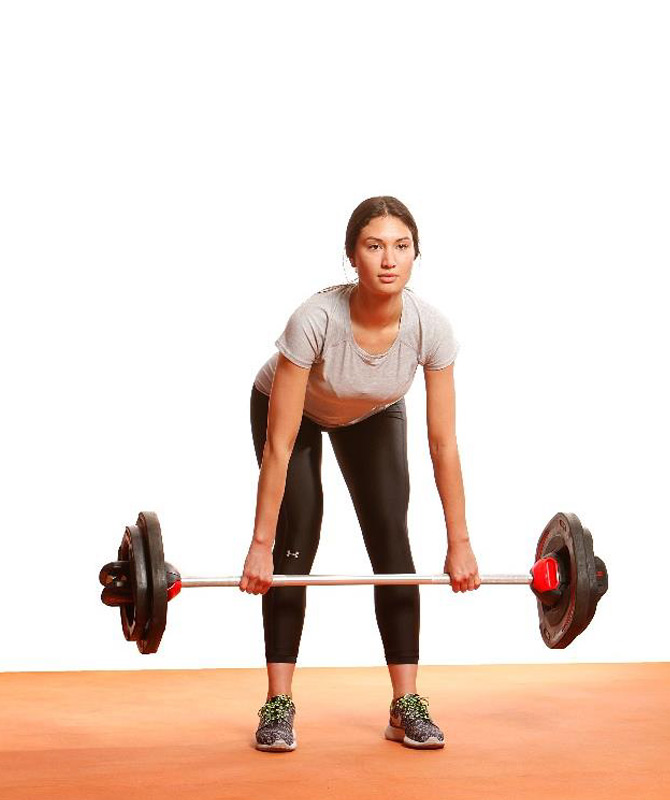
Finish Position
The bar should be lowered passed the knees and down along the shins to a depth that is the lowest point that correct hip hinge and neutral back alignment can be maintained. You should feel tension in the hamstrings at this point although a slight knee bend should remain.Maintaining core strength and exhaling powerfully push through your heels and return to standing with powerful movement of the hips and contracting glutes and hamstrings
